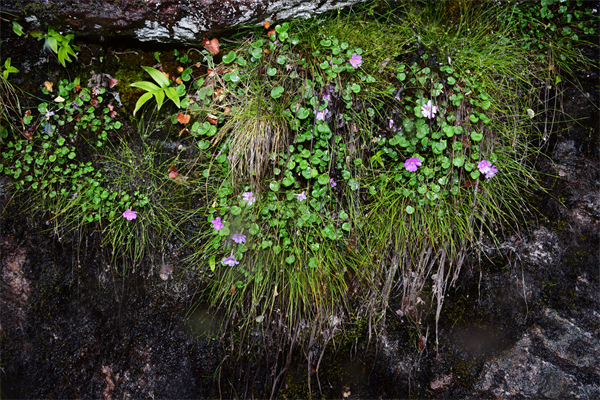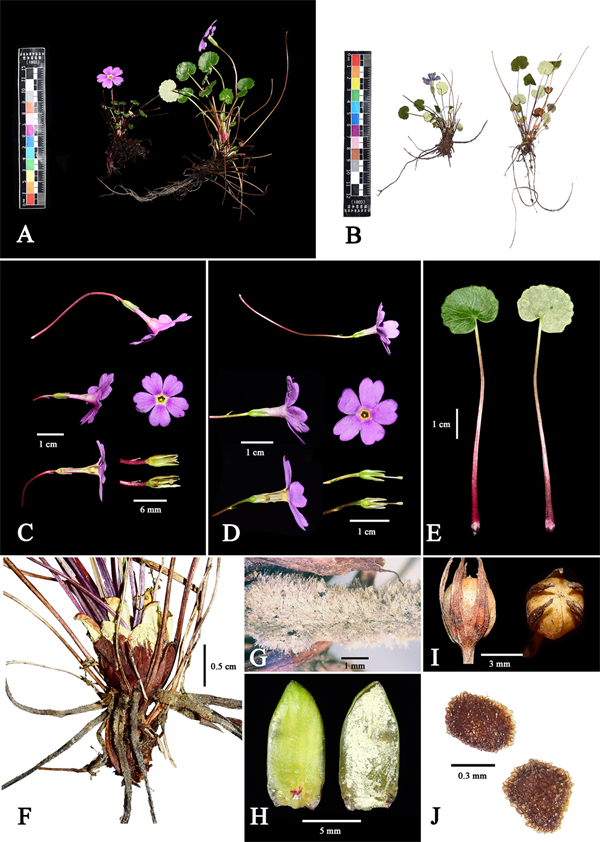New primrose species discovered in Tibet
Updated: 2023-09-07 By Palden Nyima and Daqiong in Lhasa (chinadaily.com.cn)  Print
Print 



A view of Primula motuoensis[Photo provided to chinadaily.com.cn]
Chinese researchers have discovered a heretofore unknown species of primrose in Metog county of the Tibet autonomous region, according to the county's forestry and grassland bureau.
In May last year, when Xu Bo's team from the Chengdu Institute of Biology was conducting a survey on plant diversity in Metog, an unknown species of primrose was found on a stone wall at high-altitude.
Through field population observation and morphological studies of specimens, the survey team confirmed that the species is an unpublished new species of the primula genus. They named it Primula motuoensis.
A thesis related to the discovery has been published on PhytoKeys, an international botanical journal.

Some of characteristics of the Primula motuoensis [Photo provided to chinadaily.com.cn]
According to field observations, the Primula motuoensis only grows on moist rock walls at high- altitudes, with flowering from May to June and fruiting in July. The currently known distribution area is Metog county of the Tibet autonomous region, with only one wild population.
The most prominent feature of the plant is that the petioles at the base of the plant are straight and slender, with nearly circular leaves and slightly inverted edges. Whether or not the plant is endangered could not be confirmed immediately; therefore, the investigation team has temporarily rated it as "data deficient".
The discovery of Primula motuoensis not only enriches the plant resources of the Primula genus in China but shows that the county has very high species diversity.
There are more than 500 species of Primula worldwide, mainly distributed in temperate and alpine regions of the Northern Hemisphere, with only a few species distributed in the Southern Hemisphere. There are currently more than 380 species in China, mainly distributed in the Hengduan Mountains and on the southern slopes of the Himalayas.








